Still, looking for tips on breaking in your new briar pipe? Then you’ve come to the right place. I’ve had the thrill of breaking in many pipes, so let me share a few tips to make sure you and your pipe get off to a good start.
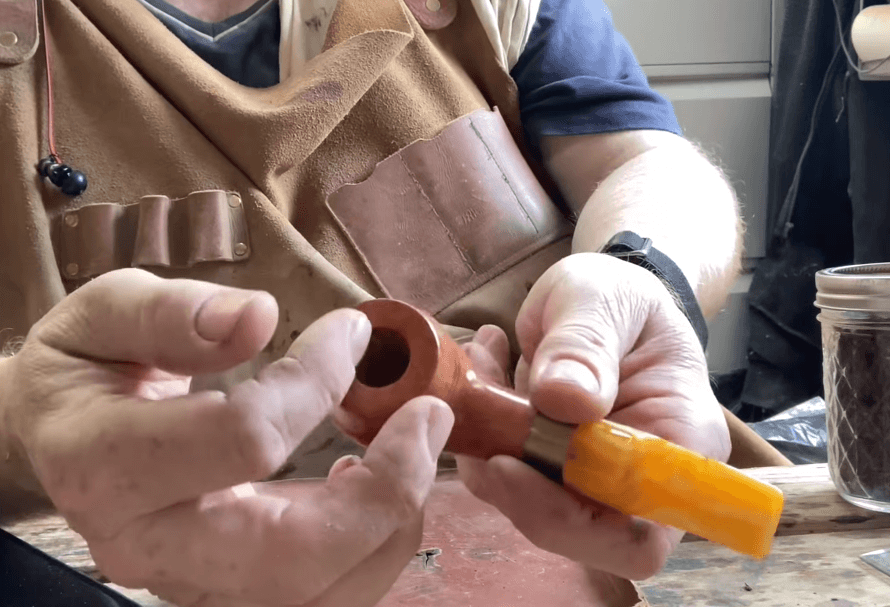
What is the purpose of the "break-in" process for a new pipe?
When I was young, I started smoking pipe. But, I did not know about “breaking in” these first new pipes. But as I grew older, I realized that these are very important.
The aim of the break-in is to create a stable carbonized layer known as cake inside the bowl. This cake will save the briar from wear and tear by absorbing moisture, oils, and tars from smoke thus preventing early burnout or cracking if we rush the process.
Typically, I recommend 20-30 short, light smokes to start. Use loose, lightly packed tobacco and take slow, gentle puffs. This causes the cake to build slowly. Between sessions, let the pipe fully cool and rest.
Besides that, This period also helps you stabilize the final shape of your pipe flue. The airways are created by these gentle initial bowls that make it the best flue profile, Thus, after a good break-in this shape will be kept consistent and it will perform well over time.
During the break-in period, you may also realize defects in a badly engineered tube. Its problems become more obvious after it has broken in and the cake that covered its flaws has gone; there is no longer any protective cake layer to hide its weaknesses. Even a well-cured pipe will still have some airflow disturbances which result in excess moisture in the smoke. This leads to dreaded tongue bites, increased heat, and dull flavors associated with moisture. It is meant to show how important good airflow is especially for a brand new pipe.
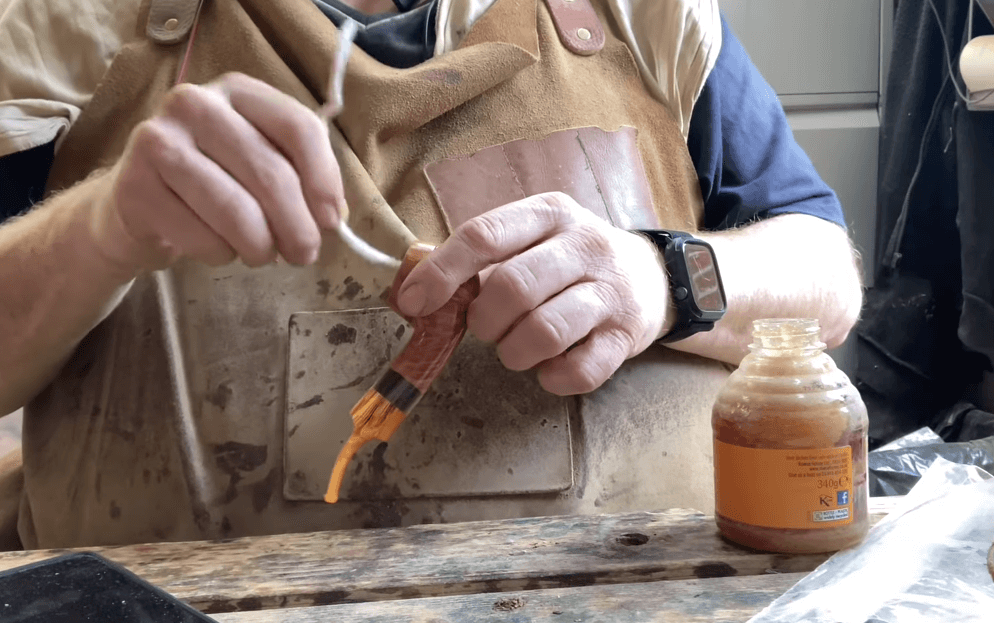
What types of tobacco are best for breaking in a new briar pipe?
The main thing I’ve learned from years of trial and error is that different tobaccos break in briars differently. Initially, when I was starting out, I would stuff my new pipes with whatever nice-smelling aromatics I could find at the shop. Wrong move! Instead of helping build up that crucial carbon cake layer these tobaccos just gum up your pipe walls. In addition, they get hoppy so you can’t really finish off say the last 1/3-ish of the bowl; uneven cake right there?
Through advice from some veteran pipers down at my local club, I’ve found simpler, natural Virginia blends are the way to go for those first few bowls. The higher sugar content in Virginias aids caramelization which helps speed up the break-in process. I like starting with something mild, maybe a straight Virginia flake. After a dozen or so bowls, I’ll switch to a mellow English or aromatic.
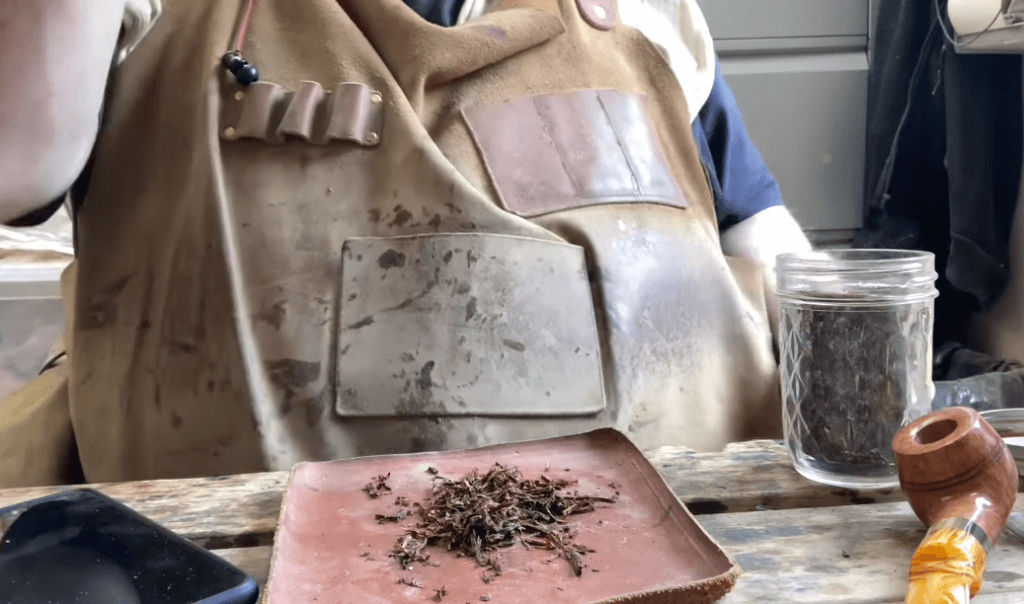
Don’t rush to load a new pipe with strong English blends or latakia-heavy tobaccos. This is the time to use milder leaves as you smoke through those first hours of break-in. It takes less time to develop a more protective carbon layer and it will also avoid any premature ghosting of the briar. After no time, the pipe will be ready for you to taste various types of tobacco to their fullest extent. The longer you wait, the better that first rich mixture of latakia tastes in a well-seasoned pipe!
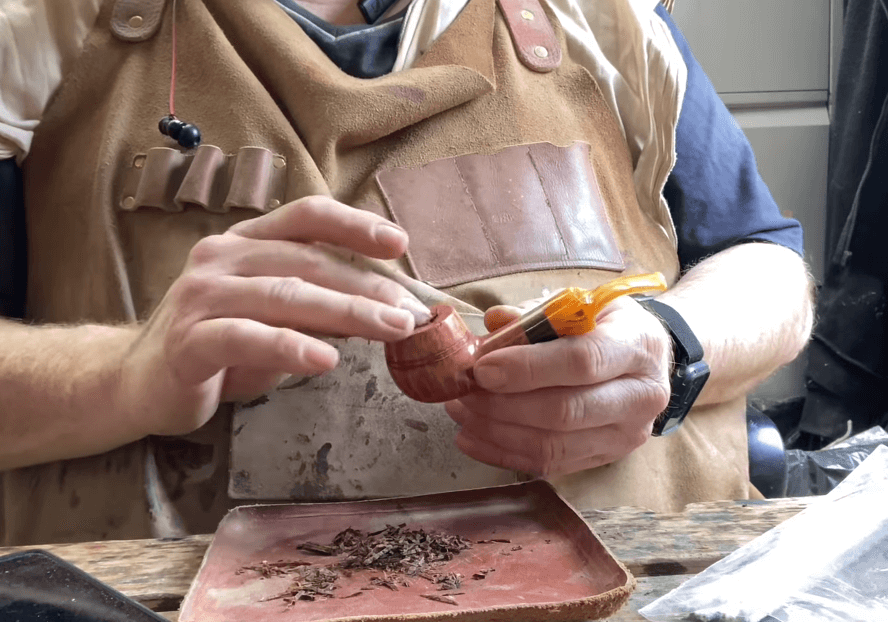
How long does it take to break in a briar pipe?
While some people argue that their pipe only takes up to 5-6 bowls, I’ve found it is best to have a long-term plan in mind. Plan for at least twelve half-bowls initially as you build the all-important carbon cake layer slowly. Do not press it hard or smoke hot during this time. After about twelve careful smokes, gradually extend your sessions.
But don’t think you’re done with the break-in process after just a few bowls! Take it slow over the first few months to really let that new pipe get accustomed to the different tobaccos you’ll be smoking. I like to stick to one blend for the first couple of weeks in a new pipe. After about a month or so, I’ll start experimenting with other mixtures.
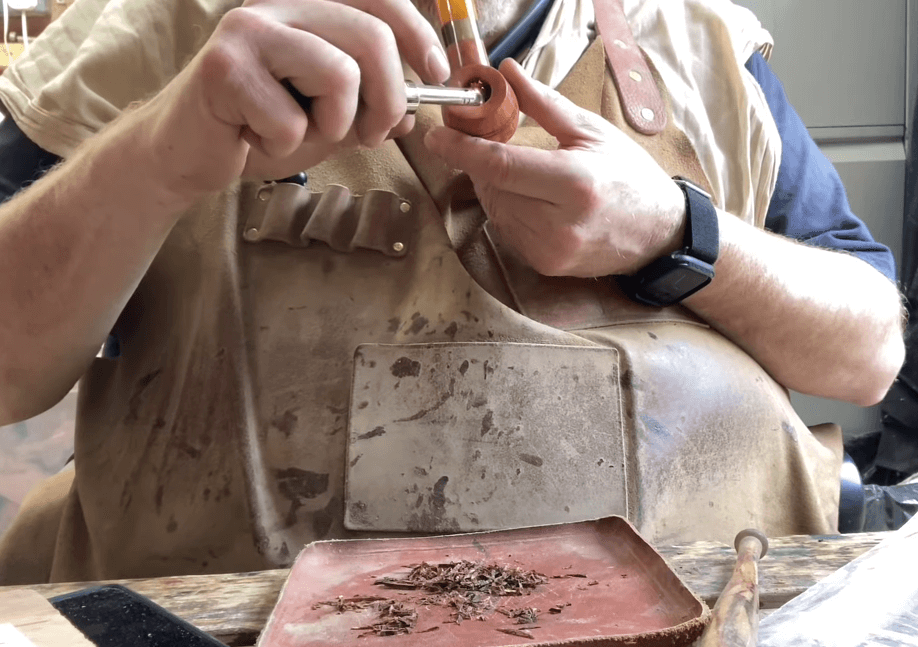
Are there any tips or tricks to make breaking in a new pipe easier?
But still, over the years, I have learned some techniques that can make for a more peaceful break-in of a new briar. For example, beginners need to tamp down on the ash but do not push it too hard on the first few bowls when the cake is being formed
And if you see moisture starting to build after those initial smokes, don’t worry – slide downstem a bit and soak it up with pipe cleaners sometime around mid-way through smoking.
Now I’ve been a pipe smoker for a long time, so my advice to beginners is not to force yourself to smoke all the tobacco in the pipe. Instead, leave some unburned tobacco at the bottom, which will prevent your pipe from burning (if you don’t do this, I don’t know what I will do if the subsequent pipe burns out). In addition, I will use some high-proof whiskey smoke instead of the irritating isopropyl alcohol, and use pipe cleaners to remove tobacco re

